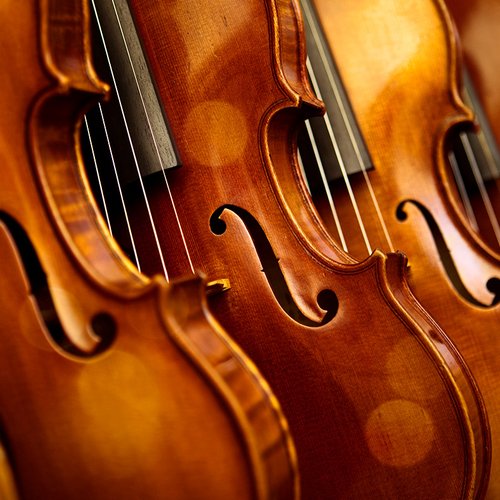These are the hardest pieces ever written for the piano
1 July 2022, 15:41

From Liszt to Scriabin, here are ten of the most fiendishly difficult pieces of piano music. Sensible musicians: avoid at all costs.
Looking for piano pieces that will make your fingers get stuck in a permanent claw shape? You’ve come to the right place.
Here is our countdown of the 10 most difficult pieces of piano music in history.
-
Liszt – La Campanella
If we could fill this list with Liszt, we absolutely would. ‘La Campanella’, which translates as ‘little bell’, comes from a larger work – the Grandes études de Paganini – and is famous for being one of the most difficult pieces ever written for piano. The piece’s technical demands include enormous jumps for the right hand played at an uncomfortably speedy tempo. Here’s Lang Lang, making it look as easy as Three Blind Mice.
Read more: Lang Lang plays blistering Brahms with wife Gina Alice

Lang Lang Franz Liszt - La Campanella 2012
-
Ravel – Gaspard de la Nuit
When Ravel wrote his fiendishly hard Gaspard de la Nuit, he set out to make it one of the most challenging pieces ever written (thanks, Maurice). One top pianist has said playing this piece is “like having to solve endless quadratic equations in my head”.
Read more: These are the hardest pieces ever written for the violin

Yuja Wang plays Scarbo from Ravel's Gaspard de la Nuit
-
Conlon Nancarrow – Studies for Player Piano
American-born composer Conlon Nancarrow’s Studies for Player Piano are some of the most deliberately complex, frantic pieces of music in keyboard repertoire – which is why they are all designed to be played by a mechanical instrument, not real human pianists. But that doesn’t mean some haven’t tried…

Nancarrow/Adès: Study for Player Piano no.7
-
Sorabji – Opus clavicembalisticum
Hard to pronounce but even harder to play, Sorabji’s Opus clavicembalisticum lasts for over four hours in total, spread across 12 movements. Of the final movement, the composer himself wrote: “The closing 4 pages are so cataclysmic and catastrophic as anything I've ever done – the harmony bites like nitric acid – the counterpoint grinds like the mills of God.”
Read more: The 25 best pianists of all time

Sorabji: Coda. Stretta
-
Charles Valentin Alkan – Concerto for Solo Piano
Alkan’s concerto is almost never played live – and with good reason. The epic 50-minute work demands unparalleled amounts of technical ability and physical stamina. Alkan’s melodies might not be as memorable as those of Chopin or Liszt, but he certainly knows how to create a technical showstopper.

ALKAN Concerto for solo piano Live by world-class concert pianist Stéphanie ELBAZ
-
Chopin – Étude Op. 10 No. 4
Unlike some of Chopin’s more delicate Nocturnes, there is no room to breathe in this ridiculously acrobatic Étude. Marked presto con fuoco, it demands an extremely fast pace, and requires constant fluidity in both hands. It’s not one to play when your fingers are feeling stiff…

Chopin - Etude Op. 10 No. 4
-
Scriabin – Sonata No. 5
Not a fan of polyrhythms? Look away now: Alexander Scriabin’s fifth piano sonata is a technical workout for the fingers and arms, but mostly the mind. Who even knows what was going on in this guy’s head...

Scriabin: Sonata no. 5, Op 53 (Richter) HQ version
-
Stravinsky – Trois mouvements de Petrouchka
Often cited as some of the toughest piano works, Stravinsky’s Three Movements from Petrushka are not for the faint-hearted. All three movements include multiple glissandi, tremolos and rapid jumps spanning over two octaves, and should be approached with caution (unless, of course, you’re Yuja Wang).

Stravinsky - Petruschka (piano version)
-
Prokofiev – Piano Concerto No. 2
The first and last movements of this work constitute some of the most dramatic music in all of Prokofiev’s piano concertos. The cadenza of the first movement is particularly taxing, and contains a third staff which requires the pianist to perform frequent, large jumps with both hands. Oh, and it lasts for a full five minutes – followed by three more ferociously hard movements.

Prokofiev: Piano Concerto n. 2 - Yefim Bronfman
-
Ligeti – Étude for Piano No. 13
What would a list of demanding pieces be without György Ligeti? Written between 1985 and 2001, the Hungarian composer’s piano etudes are one of the most terrifying works in the piano repertoire. Mostly, it has to be said, because of no. 13, ‘The Devil’s Staircase’. The whole piece is a masterpiece of dynamics, stretching from the exceptionally quiet to the colossal EIGHT fortes.

György Ligeti - Études for Piano (Book 2), No. 13 [7/9]

























